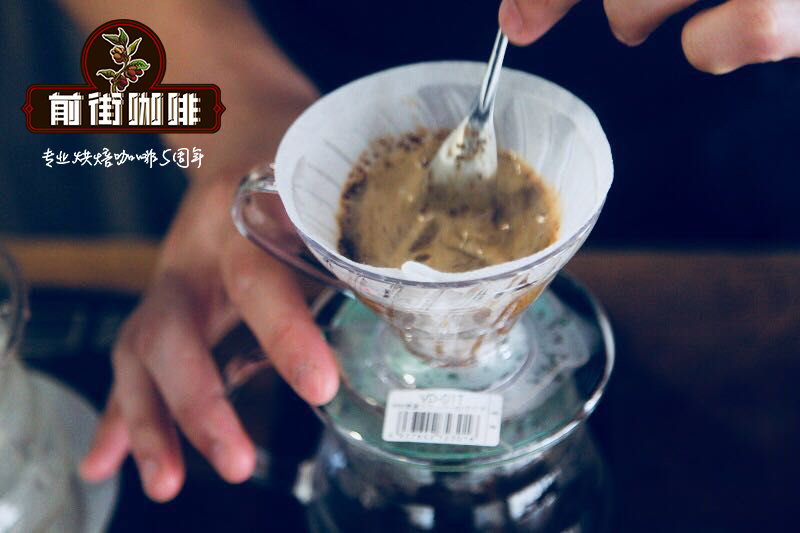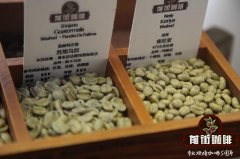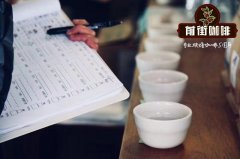Two major brands of Hawaiian coffee: the difference between Hawaiian Kona and caffeine _ which is better for Hawaiian coffee

Professional coffee knowledge exchange more coffee bean information please follow the coffee workshop (Wechat official account cafe_style)
There are numerous islands formed after the volcanic uplift in the Pacific Ocean rises out of the sea, among which the remote and romantic Hawaiian Islands is a sea pearl of the United States.
Hawaii not only has a unique culture and folk customs different from those of the United States, but also attracts tourists from all over the world. Because it is located in the coffee growing zone and has fertile volcanic soil, coupled with the year-round cloudy and foggy climate formed by the tropical maritime climate, it is conducive to the growth and development of coffee trees, and has a particularly important impact on the flavor of coffee after maturity, so the coffee produced in KONA Island and KAU Island of Hawaii is gradually familiar to the world.
Kona and Kona are located in the southernmost island of Hawaii (commonly known as the Big Island), and Mauna Loa, the world's largest volcano, is located on the Big Island. Experts point out that there are 13 climates in the world. Eleven can be found around Kona and Kafu. There are desert, jade forest, tropical, temperate, monsoon and alpine climate patterns on the island, which influence each other. The temperature drops suddenly at night, returns to the temperature at noon, and the temperature difference between day and night is big.
The most special thing about Oshima is that the dry and wet season is distinct. After a short dry season, the rainy season begins. Coincidentally, the rainfall increases as the coffee fruit ripens, and when the harvest is ready, the rainfall begins to decrease and enter the dry season. This rainfall pattern is most suitable for coffee aroma and flavor, but also gives birth to the unique coffee flavor of Dadao.
Kona and Kawu are located on the west and south of Mauna Loa respectively. Although they are planted at an altitude of only 200m-800m, the average annual temperature is less than 20 ℃, and thick clouds come in the afternoon, providing the best shade for coffee. It is probably these favorable natural conditions that make the average yield of Kona in Hawaii very high, reaching 2240 kg per hectare, while in Latin America, coffee yields only 600kg per hectare.
It has been 180 years since Kona planted coffee in 1828, but for more than a hundred years, she mainly planted sugarcane, until after 1990, sugarcane lost its competitiveness, sugar cane farmers were displaced, and their livelihood was difficult. with the promotion and guidance of relevant agencies of the United States Department of Agriculture, she switched to coffee in 1996.
Kona and Curry are both varieties of iron pickup. Under the specific geographical environment of Hawaii, the original varieties of iron pickup gradually vary. Compared with Jamaica Blue Mountain Coffee, which is also iron pickup, the raw bean is slightly larger than Blue Mountain, and the EF grade of Kona is more than 18 mesh. The whole is full, uniform and waxy, and the washed raw bean has a rich smell of grass. Sun-dried raw beans will show the smell of caramel, wine and so on. At present, Kona basically only has water washing and sun treatment, while coffee farmers with coffee fog are more willing to try multiple treatments, such as tanning, semi-washing, honey treatment, wet planing and innovative Pepsi Cola and sea water treatment. Hawaiian Kona raw beans are divided into three grades: ExtraFancy, Fancy and NumberOne, while hand-selected round beans (Peaberry) account for about 5 per cent of production.
Henry, 1873. Nicholas. Kona Coffee, grown in Greenville, was awarded a "Certificate of Excellence in quality" at the Vienna World Expo, which made Kona coffee famous in the world. Greenville's house is still a place of interest on the big island, and the Greenville Manor he runs is currently Cona's heavyweight coffee farm.
Kona Chuang is famous for its early planting of Brazilian Tibica, but farmers find that when Brazilian Tibica's coffee fruit is ripe, it is easy to fall off in the event of wind and rain, causing losses, and the yield has periodic fluctuations, one more year, and the output drops sharply every other year. Later, the improved Tibica from Guatemala was introduced by German judge Weidman of the Kingdom of Hawaii. after trial planting, the yield was stable and the fruit was not easy to fall off. So farmers abandoned Brazilian Tibica and planted Guatemalan Tibica instead.
Kona is far more famous in Chinese mainland than in Curry, although Kona is never inferior to Kona in flavor. In the Chinese market, the famous Greenville Manor, Hula Daddy Manor and Kaj Farm Coffee are rare, but another Queen Farm has a relatively high market share in China because of the winnable promotion in Shanghai. In the Kona area, there are about 600 independent coffee farms, most of which are small family farms, usually with an area of between 18 and 42 acres. Visitors to Hawaii can visit the coffee farm, see or participate in various processes such as coffee harvest, bean processing, roasting and grinding, and make a cup of coffee that really belongs to them.
On Kona Island, only about 1400 hectares of coffee is produced, and because Hawaii is world-famous for tourism, has a large number of tourists, people have a high level of income, and retail prices are extremely expensive in Hawaii and the United States. Even "matching Kona" (with a kona blend content of no less than 10%) is sold. However, in recent years, neighboring islands such as maui, kauai and molokai have also begun to grow coffee commercially.
● Hawaiian coffee bean brand recommendation
The Hawaiian coffee [kona beans] baked on Qianjie Coffee is fully guaranteed in terms of brand and quality. And more importantly, the performance-to-price ratio is extremely high, a pack of 100 grams, the price is only 120 yuan. According to the calculation of 15 grams of powder per cup of coffee, a bag of coffee can make six cups of coffee, which costs only about 20 yuan per cup, which is recommended by conscience compared to the price sold in cafes for dozens of yuan a cup.
Qianjie coffee: Guangzhou bakery, the store is small but a variety of beans, you can find a variety of unknown beans, but also provide online store services. Https://shop104210103.taobao.com
Important Notice :
前街咖啡 FrontStreet Coffee has moved to new addredd:
FrontStreet Coffee Address: 315,Donghua East Road,GuangZhou
Tel:020 38364473
- Prev

The grading standard of Hawaiian Kona coffee _ how to identify the real Hawaiian Kona coffee?
Professional coffee knowledge exchange more information about coffee beans Please follow the coffee workshop (Wechat official account cafe_style) when it comes to Hawaii in the United States, the first thing that comes to mind is a holiday resort. Maybe you don't know, it is also a famous coffee producing area. Hawaii is the only place in the United States where coffee is produced. For a long time, Jamaica's Blue Mountain Coffee and Hawaiian Kona Coffee
- Next

Is Hawaii Kona Coffee, one of the Top Ten Coffee Brands in the World, good? Hawaiian Coffee tastes like Vanilla
Professional coffee knowledge exchange more coffee bean information please follow the coffee workshop (Wechat official account cafe_style) Hawaii Kona Coffee is one of the top three coffee beans in the world along with Blue Mountain and Kilimanjaro. Its output is less than 1% of the world coffee output, which can be called Yulu grade coffee. It is also the coffee served by the President of the United States to the state guests. It's on the beach of Hawaii
Related
- Detailed explanation of Jadeite planting Land in Panamanian Jadeite Manor introduction to the grading system of Jadeite competitive bidding, Red bid, Green bid and Rose Summer
- Story of Coffee planting in Brenka region of Costa Rica Stonehenge Manor anaerobic heavy honey treatment of flavor mouth
- What's on the barrel of Blue Mountain Coffee beans?
- Can American coffee also pull flowers? How to use hot American style to pull out a good-looking pattern?
- Can you make a cold extract with coffee beans? What is the right proportion for cold-extracted coffee formula?
- Indonesian PWN Gold Mandrine Coffee Origin Features Flavor How to Chong? Mandolin coffee is American.
- A brief introduction to the flavor characteristics of Brazilian yellow bourbon coffee beans
- What is the effect of different water quality on the flavor of cold-extracted coffee? What kind of water is best for brewing coffee?
- Why do you think of Rose Summer whenever you mention Panamanian coffee?
- Introduction to the characteristics of authentic blue mountain coffee bean producing areas? What is the CIB Coffee Authority in Jamaica?

